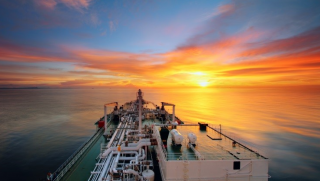LNG Can Become the Most Important Fuel Solution

LNG as a fuel has the potential to become the most important fuel solution for environmentally sustainable shipping over the next few years, the CMA Shipping 2016 in Connecticut has heard.
Namely, during a presentation at the conference, Dr. Gerd-Michael Würsig, Business Director LNG fuelled ships at DNV GL — Maritime, looked at some of the current issues in the LNG industry and provided an overview of what DNV GL is doing to support growth in this segment.
“The main drivers, in order of importance, are price, availability, and of course legislation,” he said.
In a low cost market with a vast number of liquefaction plants commissioned or under construction, DNV GL expects global LNG production to grow by around 40 percent over the next four years, when compared to figures from 2014.
Looking ahead, DNV GL expects the overall use of alternative fuels to increase, including LNG, methanol, and other new fuels produced from natural resources. However, the challenge will be aligning partners across the industry and regulators around the world.
“It is clear that operators and owners are looking to regulators and class societies for guidance. Throughout the week, we’ve repeatedly heard that companies are ‘learning as they go.’ DNV GL’s notations on gas fueled ships are the most advanced available and address the global picture,” explained Paal Johansen, DNV GL’s Executive Vice President for Region Americas.
“We are very pleased to see the significant growth within the LNG industry in the Americas. Looking at the newbuilding projects, 25 percent confirmed they will operate in American waters, which means this region will be second only to Europe in terms of LNG operations,” Johansen added.
Currently, there are roughly 160 ships in operation and on order worldwide.
DNV GL has just released a new LNG intelligence portal (LNGi) on Monday, March 21, which allows subscribers to assess the availability of LNG fuel for specific trade routes and newbuild projects. It also provides information about current market developments, as well as status updates of other alternative fuels and emissions reduction technologies across every vessel segment.
HEADLINES
- Do shipping markets want Biden or Trump for the win?
- All 18 crew safe after fire on Japanese-owned tanker off Singapore
- Singapore launching $44m co-investment initiative for maritime tech start-ups
- Cosco debuts Global Shipping Industry Chain Cooperation Initiative
- US warns of more shipping sanctions
- China continues seaport consolidation as Dalian offer goes unconditional